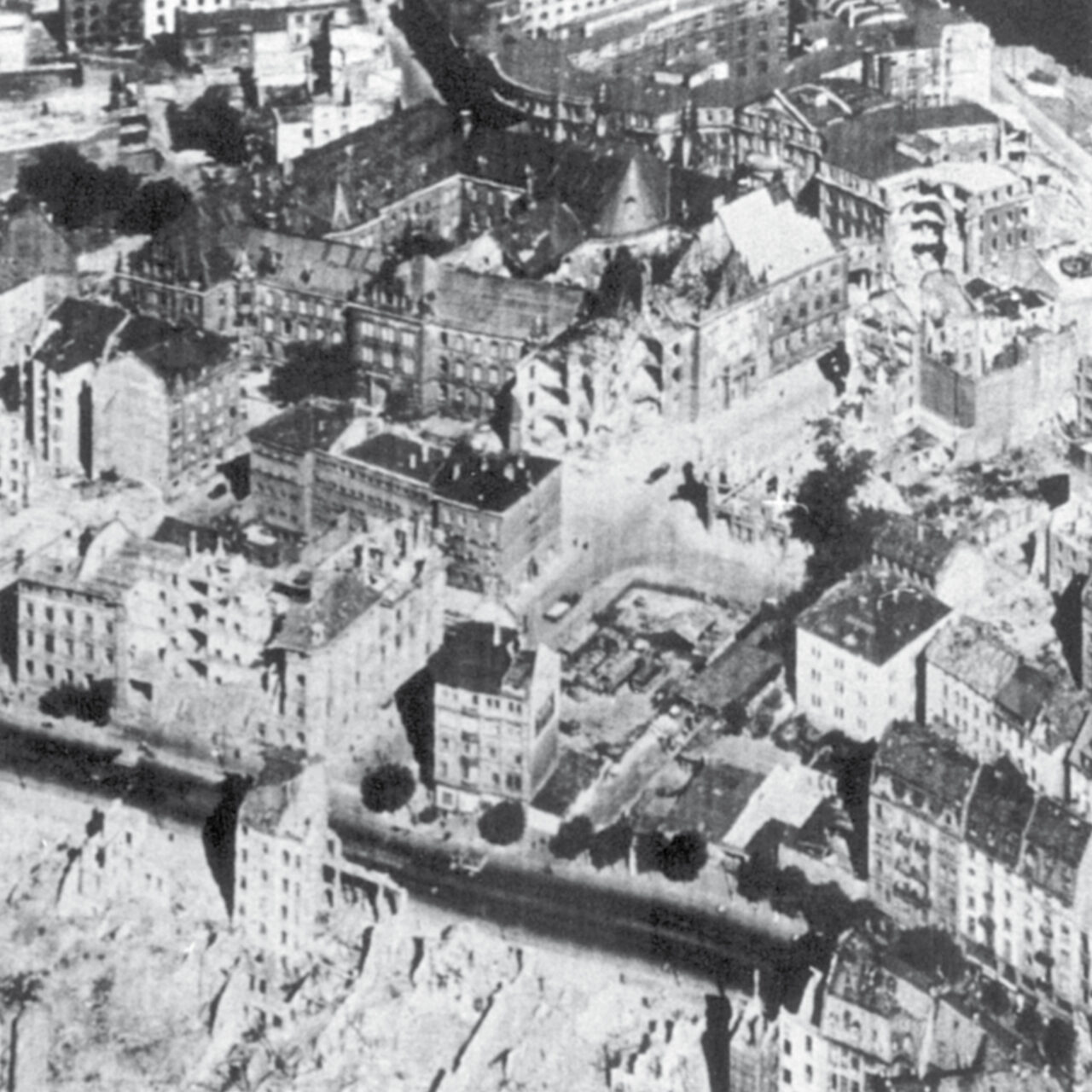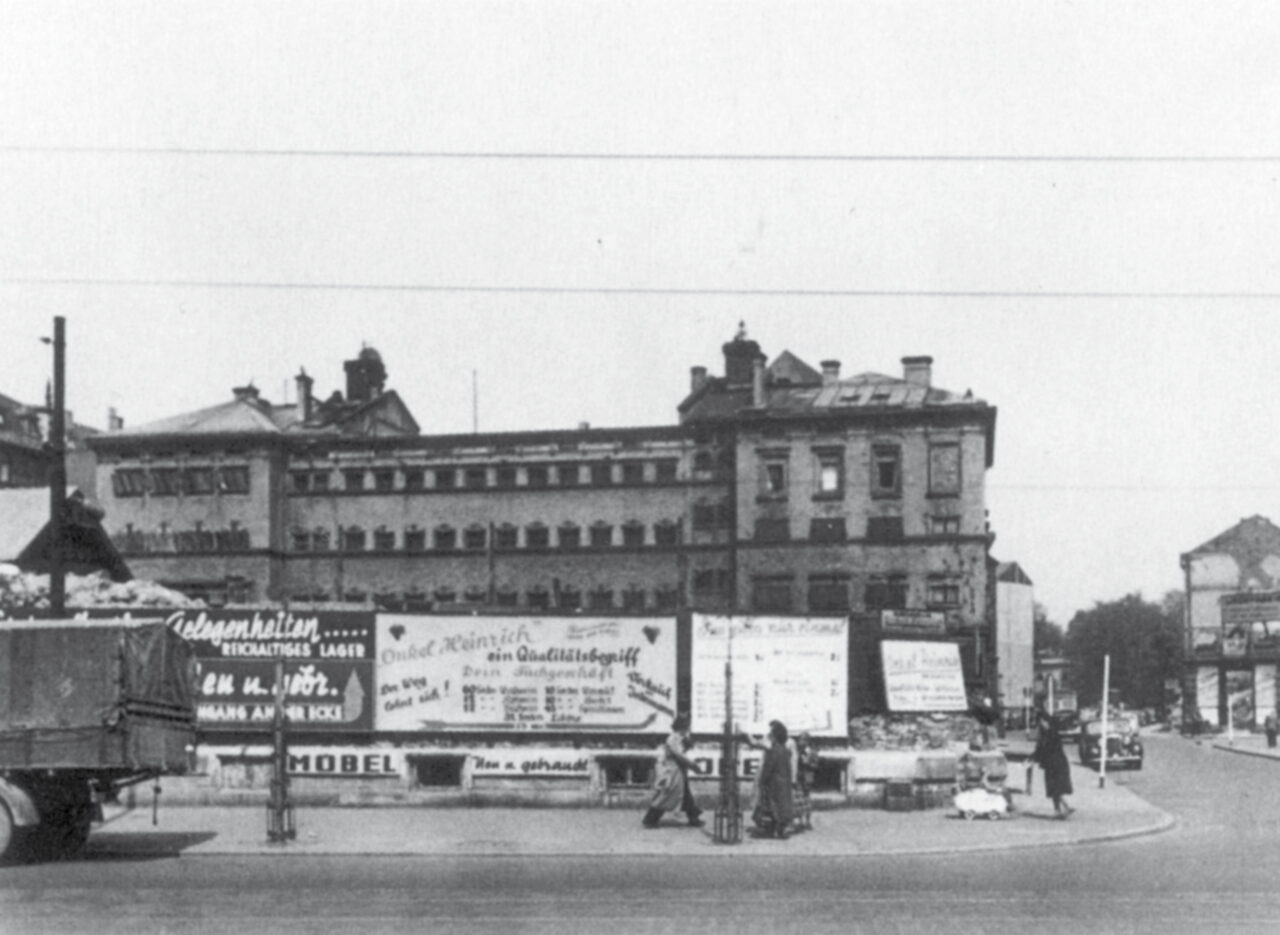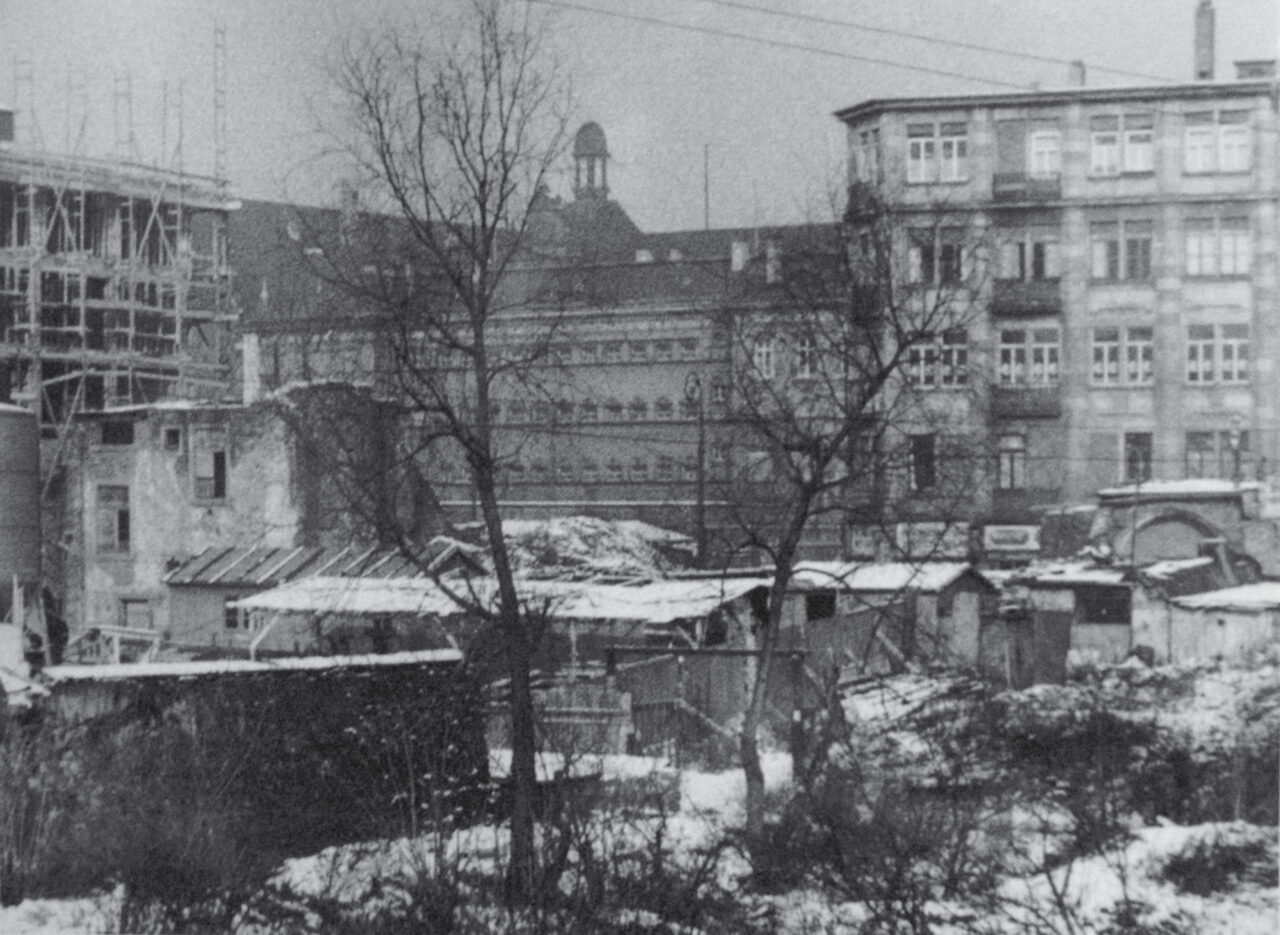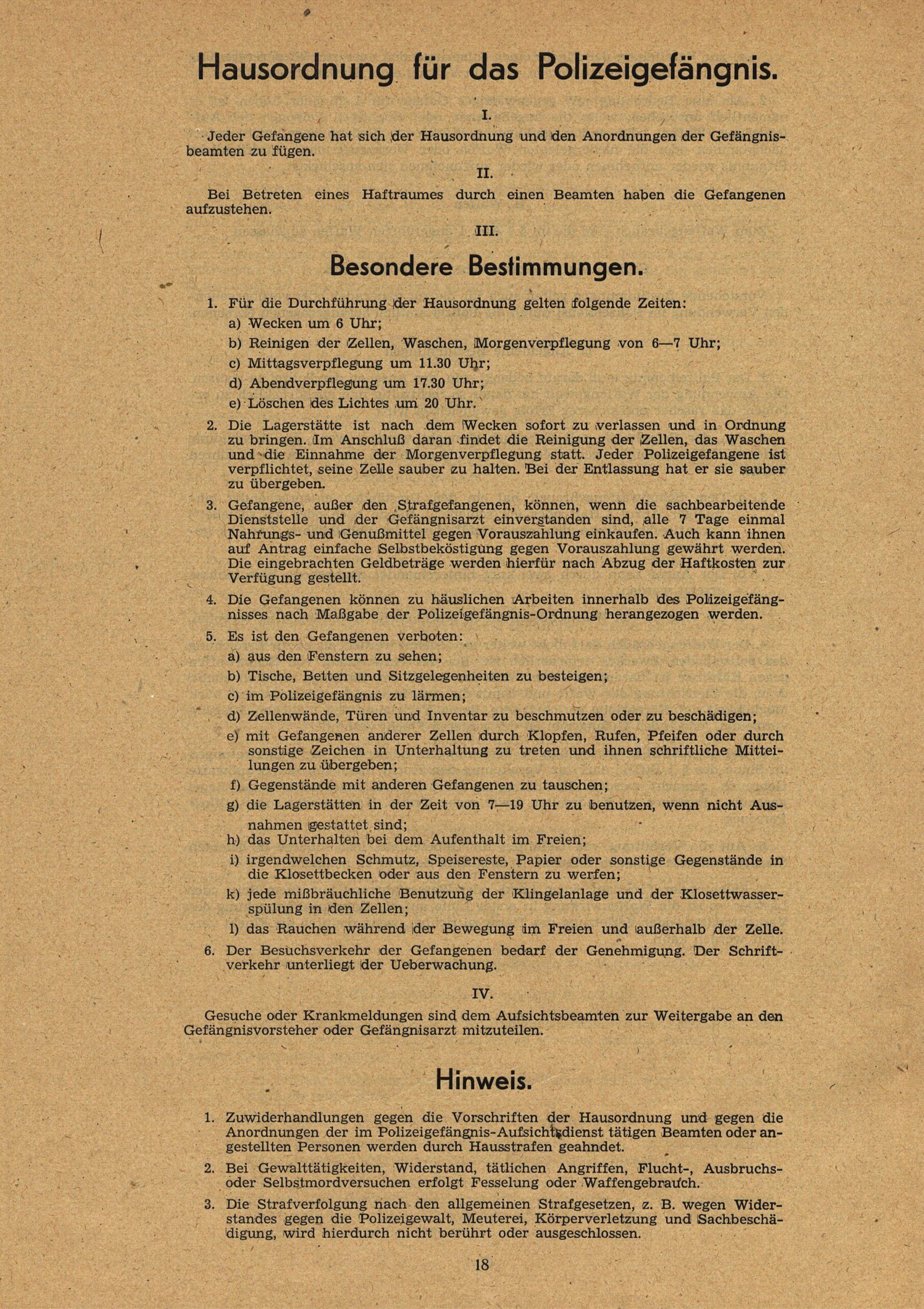One month before the American army entered Frankfurt, the victorious powers decided at the Yalta Conference in February 1945 to divide Germany into four occupation zones. Accordingly, the Soviet Union, Great Britain, France and the USA each administered separate areas. The Allied Control Council, based in Berlin, was the supreme governing body of the victorious powers. It consisted of four supreme commanders of the respective armies.

Frankfurt am Main belonged to the American zone and was under the administration of the American military government. The Klapperfeld police prison was also taken over by the Americans to imprison Nazis and people who had committed crimes.
The majority of political prisoners were initially imprisoned in Klapperfeld. However, the space soon became insufficient and four weeks after the move into Frankfurt, the prison in Hammelsgasse had to be reconstructed as alternative quarters, which was initially refrained from because of more severe bomb damage. 150 prisoners were transferred from the Klapperfeld police prison to Hammelsgasse.
In Klapperfeld, the first-aid room had been destroyed by a bomb, window panes were no longer available and the sanitary facilities were also inadequate for the conditions. In addition, the Klapperfeld police prison had become so infested with lice due to overcrowding and the poor treatment of the inmates during the Nazi regime that in April 1945 the Red Cross had to delouse it with DDT powder. Before that, no delousing could take place due to a lack of water in the police prison.

The prison was equipped with bugs by the Americans so that the Nazis could be bugged before their trials.
The arrests in the first weeks of the war were mostly based on anonymous reports. Basic guidelines for political arrests did not exist at that time. The first arrests took place on 7 April 1945, the first interrogations on 11 and 12 April 1945.
In April, 20 trained criminal police officers and 30 employees worked in the Klapperfeld police prison. Among the employees were several former concentration camp inmates.
In the course of April 1945, the American military government decided that anonymous reports could no longer be accepted. From now on, if a report was to be taken, one had to show one‘s identity card.
In April 1945 there were 460 prisoners in the Klapperfeld police prison, including 440 political prisoners. In May 1945, 615 people were imprisoned in Klapperfeld, 533 men and 82 women. The proportion of political prisoners is not yet known.
The political prisoners were allowed half an hour of fresh air in the yard each day.

In September 1945, the American military government decided to place the state prisons under their own administrative management after a complete denazification of the various cities. The guards were to be given uniform uniforms and armed.
Furthermore, new prison regulations were to be issued that would be uniform with other state prisons. However, the prisons were still controlled by MPs (American military police).

Source: Stadtarchiv Frankfurt am Main: Magistratsakten Zugang 47/69; Sig. 5887